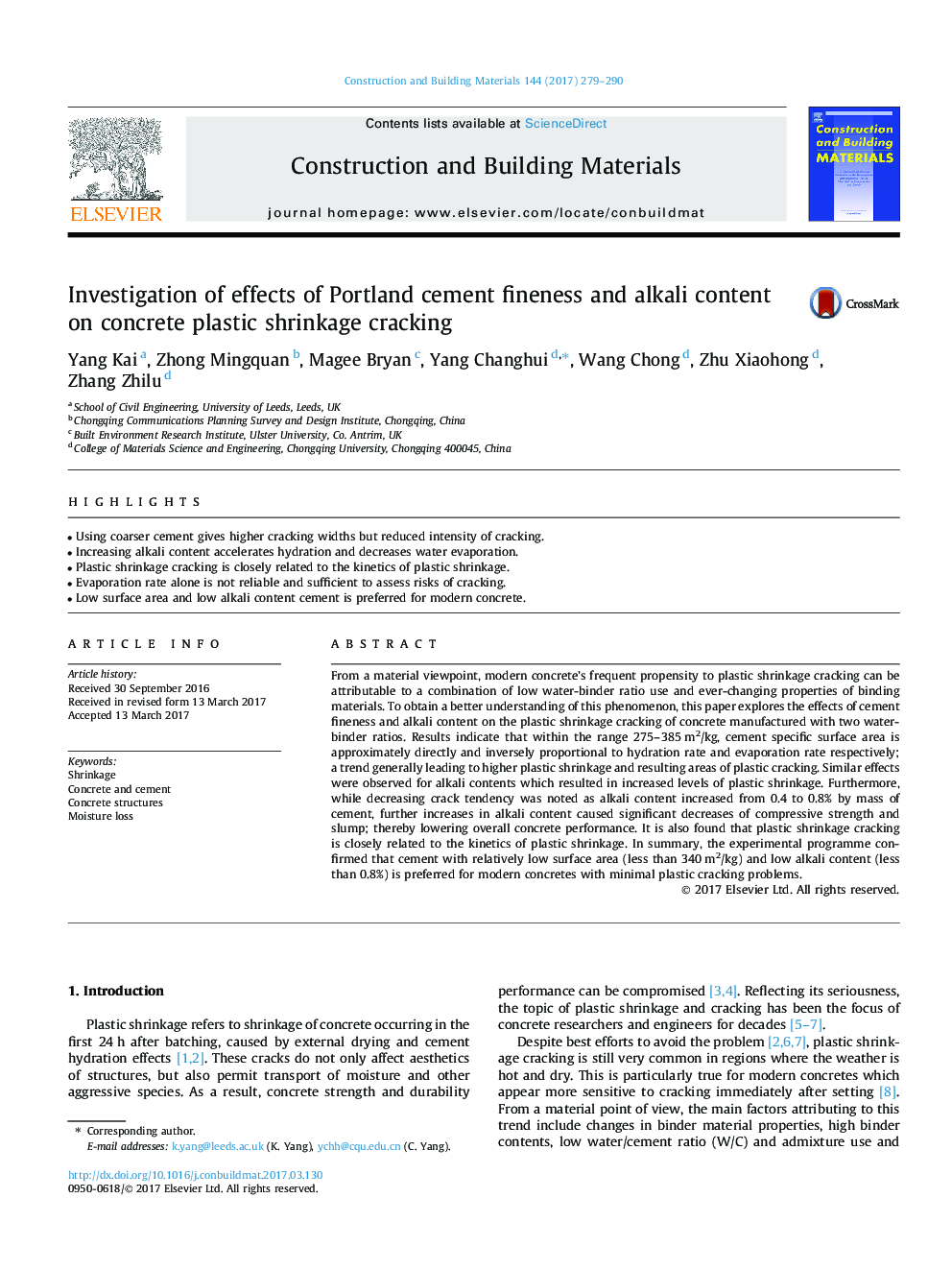| Article ID | Journal | Published Year | Pages | File Type |
|---|---|---|---|---|
| 4913167 | Construction and Building Materials | 2017 | 12 Pages |
Abstract
From a material viewpoint, modern concrete's frequent propensity to plastic shrinkage cracking can be attributable to a combination of low water-binder ratio use and ever-changing properties of binding materials. To obtain a better understanding of this phenomenon, this paper explores the effects of cement fineness and alkali content on the plastic shrinkage cracking of concrete manufactured with two water-binder ratios. Results indicate that within the range 275-385Â m2/kg, cement specific surface area is approximately directly and inversely proportional to hydration rate and evaporation rate respectively; a trend generally leading to higher plastic shrinkage and resulting areas of plastic cracking. Similar effects were observed for alkali contents which resulted in increased levels of plastic shrinkage. Furthermore, while decreasing crack tendency was noted as alkali content increased from 0.4 to 0.8% by mass of cement, further increases in alkali content caused significant decreases of compressive strength and slump; thereby lowering overall concrete performance. It is also found that plastic shrinkage cracking is closely related to the kinetics of plastic shrinkage. In summary, the experimental programme confirmed that cement with relatively low surface area (less than 340Â m2/kg) and low alkali content (less than 0.8%) is preferred for modern concretes with minimal plastic cracking problems.
Related Topics
Physical Sciences and Engineering
Engineering
Civil and Structural Engineering
Authors
Yang Kai, Zhong Mingquan, Magee Bryan, Yang Changhui, Wang Chong, Zhu Xiaohong, Zhang Zhilu,
